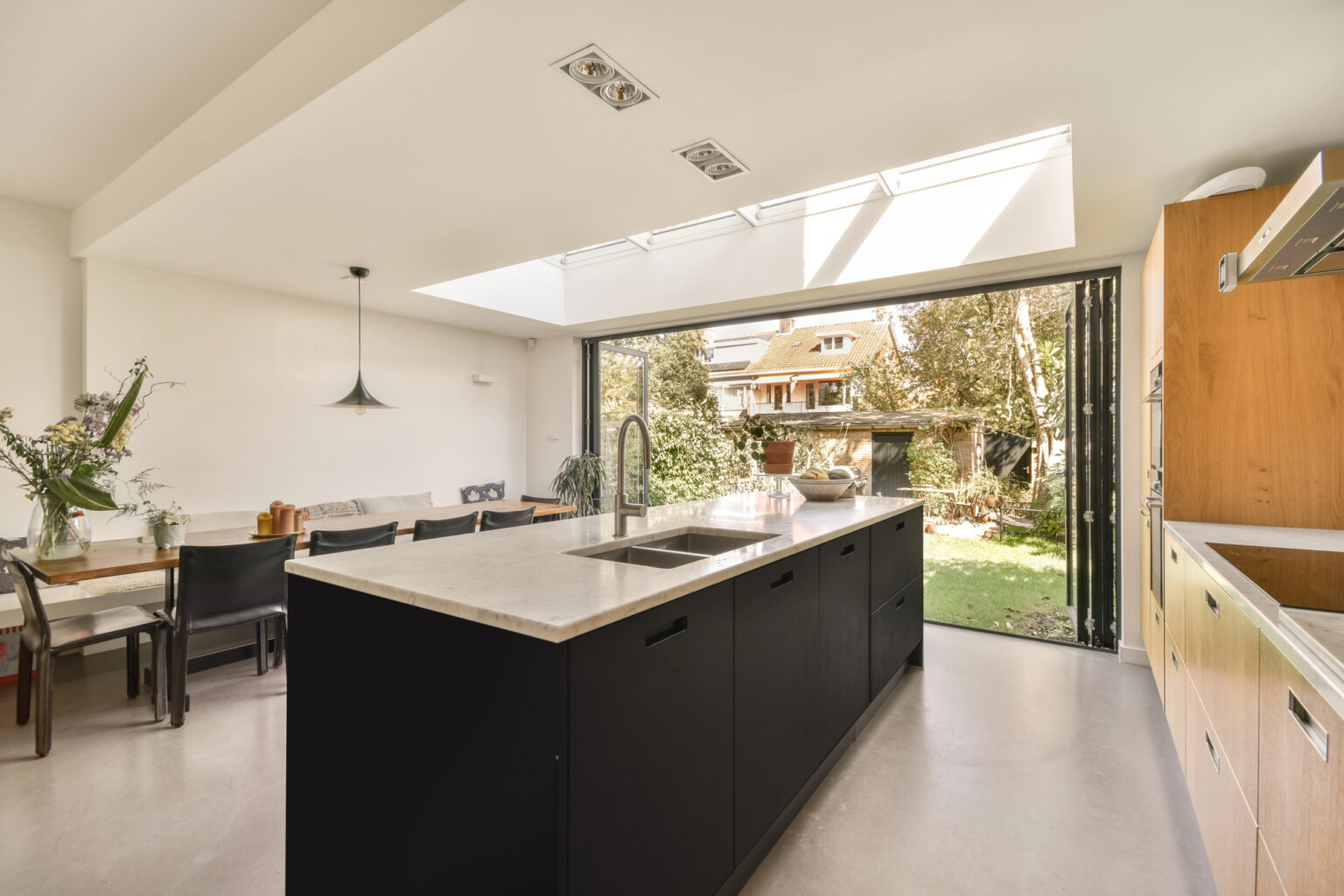Modern home design is undergoing a major transformation. Today’s homeowners want more than just square footage; they’re seeking experiences, flexibility, and a closer connection to nature. This shift has led to the rise of indoor outdoor living spaces, a design trend that combines the comfort of interiors with the freedom and freshness of outdoor areas. The result is a fluid, harmonious environment that enhances both lifestyle and property value.
Understanding the Indoor Outdoor Concept
Indoor-outdoor living isn’t about simply putting furniture outside or adding a few plants indoors. It’s a holistic approach to design that removes the boundaries between a home’s interior and the outdoors. From folding glass doors and retractable walls to unified flooring and shared colour palettes, every detail works toward creating a natural extension of your living space.
Imagine cooking dinner in your kitchen while chatting with guests lounging on a connected patio, or opening your bedroom doors to a cozy balcony surrounded by greenery. These moments are made possible by thoughtful design that treats the indoors and outdoors as one continuous space.
Key Benefits of Indoor Outdoor Living

1. A Healthier Lifestyle
Spending more time outdoors can significantly improve mental and physical health. Natural light regulates sleep patterns, while fresh air boosts energy and reduces stress. With indoor-outdoor design, these benefits become part of your daily routine.
2. Year Round Enjoyment
With innovations like outdoor heaters, insulated roofing, and covered patios, your indoor outdoor space doesn’t have to be seasonal. Even in colder climates, these areas can be enjoyed throughout the year.
3. Versatile Use of Space
Indoor outdoor areas serve multiple purposes. A deck can be a morning yoga spot, an afternoon reading nook, and a lively entertaining area in the evening. Flexibility is a major advantage for families and individuals who want to get the most from every square foot.
4. Seamless Entertaining
Hosting guests becomes easier and more enjoyable. Whether it’s a weekend BBQ or a quiet wine night, these open flow spaces allow for easy movement, better air circulation, and a relaxed atmosphere.
5. Boosted Property Value
Buyers are increasingly looking for homes that offer lifestyle benefits, and indoor-outdoor spaces are high on the wishlist. A well designed connection between inside and out can make your home stand out in a competitive market.
Design Elements That Make It Work
Creating an effective indoor-outdoor space requires attention to both design and function. Here are some essential components.
Sliding or Folding Doors
Large, retractable doors are perhaps the most crucial feature. They remove the physical barrier and allow the entire wall to open, making the transition between inside and outside feel natural.
Matching Materials
Use the same materials or complementary finishes in both areas. For example, if your indoor flooring is hardwood, consider using weather resistant composite decking in a similar tone for the outdoor area.
Weatherproof Furnishings
Invest in furniture that can withstand sun, rain, and temperature changes. But that doesn’t mean sacrificing style; many modern outdoor furniture lines are just as chic as their indoor counterparts.
Functional Lighting
Install adjustable lighting to control the mood. Soft, warm lights can make your outdoor area feel as cozy as a living room, especially after sunset.
Smart Tech Integration
From built-in sound systems to smart thermostats and lighting, integrating tech into your design makes it easy to enjoy your space with comfort and convenience.
Enhancing the Design Process with Digital Tools
Planning an indoor outdoor space requires visualizing how elements will come together. Digital tools make it easier to plan layouts, choose color schemes, and present ideas clearly. One particularly useful tool is the photo background remover, which lets you isolate specific elements in your photos perfect for planning mood boards, showing before and after shots, or pitching ideas to architects and contractors.
These tools allow homeowners to bring their design dreams to life, make confident decisions, and save time during the renovation or build process.
Small Space Solutions for Apartments and Urban Homes
You don’t need a sprawling backyard to enjoy the benefits of indoor-outdoor living. Here are a few creative ideas for small spaces.
- Juliet balconies with floor-to-ceiling windows give a sense of openness and connection to the outside.
- Pocket gardens in courtyards or between walls can become lush, intimate retreats.
- Window seats with greenery and sunlight simulate the outdoor experience even from inside.
- Folding tables and vertical planters make balconies and terraces functional and beautiful without taking up too much room.
Sustainable Choices for a Greener Space
Indoor-outdoor living also supports eco conscious lifestyles. By making thoughtful choices, your space can become a sustainable oasis. For example, you could use:
- Solar powered lighting and water features reduce energy use.
- Rainwater collection systems can irrigate your garden naturally.
- Native plants require less water and maintenance.
- Natural ventilation through open doors and windows reduces reliance on air conditioning.
These additions not only support the environment but also lower utility bills and reduce your home’s overall carbon footprint.
Final Thoughts
Indoor-outdoor living isn’t just a design trend, it’s a lifestyle enhancement that brings comfort, beauty, and practicality together. Whether you’re creating a luxurious open plan layout or simply adding a few nature inspired touches, blurring the line between indoors and outdoors can improve your living experience and is a powerful way to reconnect with nature and create a home that works for you.
0
Related
Read the full article here


